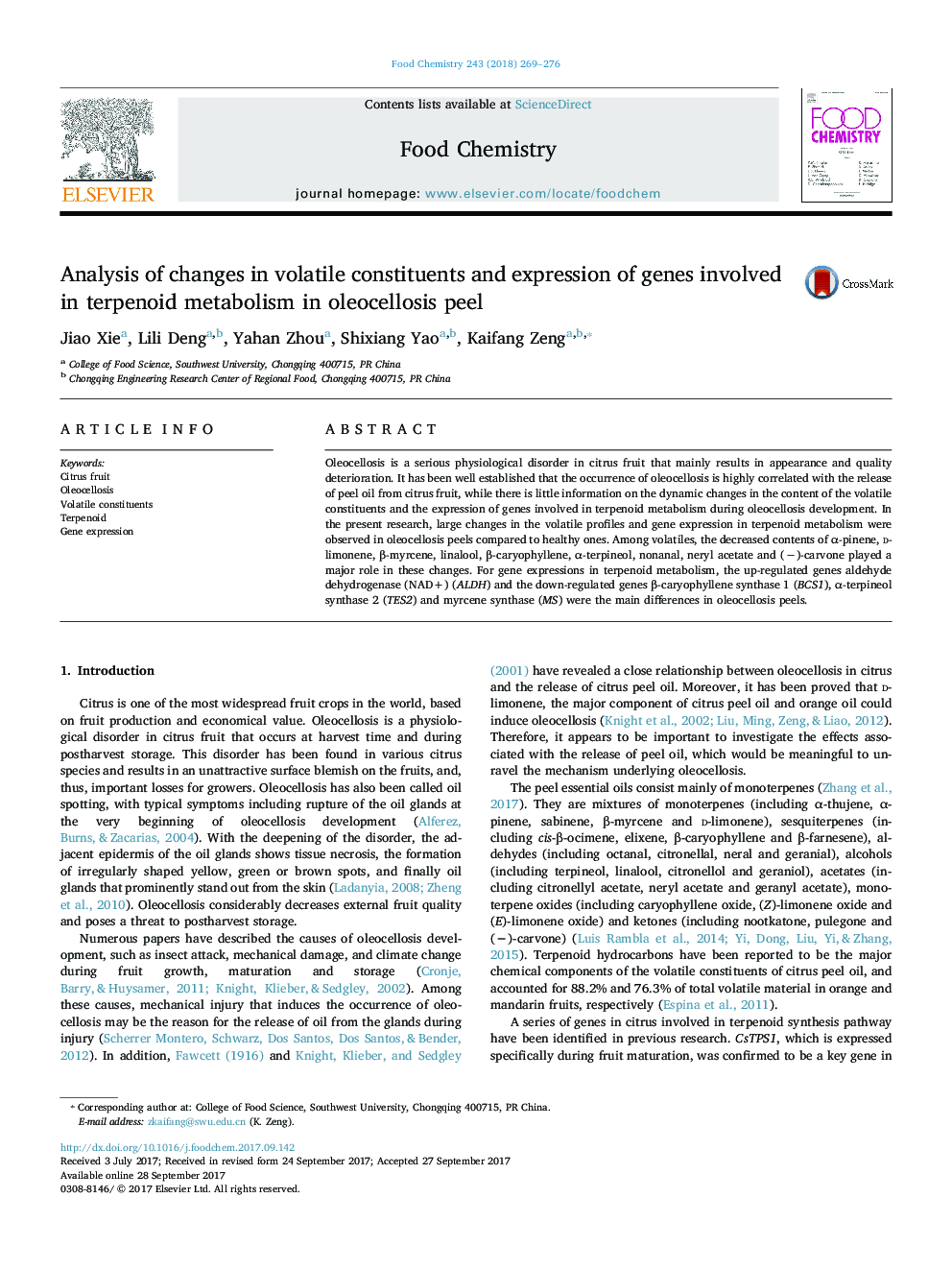| Article ID | Journal | Published Year | Pages | File Type |
|---|---|---|---|---|
| 5132555 | Food Chemistry | 2018 | 8 Pages |
â¢The changes in the volatile constituents of oleocellosis peels were analyzed by GC-MS.â¢Gene expression in terpenoid metabolism was measured in oleocellosis peels by RNA-Seq.â¢Large changes in volatiles and expression of genes were found in oleocellosis peels.
Oleocellosis is a serious physiological disorder in citrus fruit that mainly results in appearance and quality deterioration. It has been well established that the occurrence of oleocellosis is highly correlated with the release of peel oil from citrus fruit, while there is little information on the dynamic changes in the content of the volatile constituents and the expression of genes involved in terpenoid metabolism during oleocellosis development. In the present research, large changes in the volatile profiles and gene expression in terpenoid metabolism were observed in oleocellosis peels compared to healthy ones. Among volatiles, the decreased contents of α-pinene, d-limonene, β-myrcene, linalool, β-caryophyllene, α-terpineol, nonanal, neryl acetate and (â)-carvone played a major role in these changes. For gene expressions in terpenoid metabolism, the up-regulated genes aldehyde dehydrogenase (NAD+) (ALDH) and the down-regulated genes β-caryophyllene synthase 1 (BCS1), α-terpineol synthase 2 (TES2) and myrcene synthase (MS) were the main differences in oleocellosis peels.
